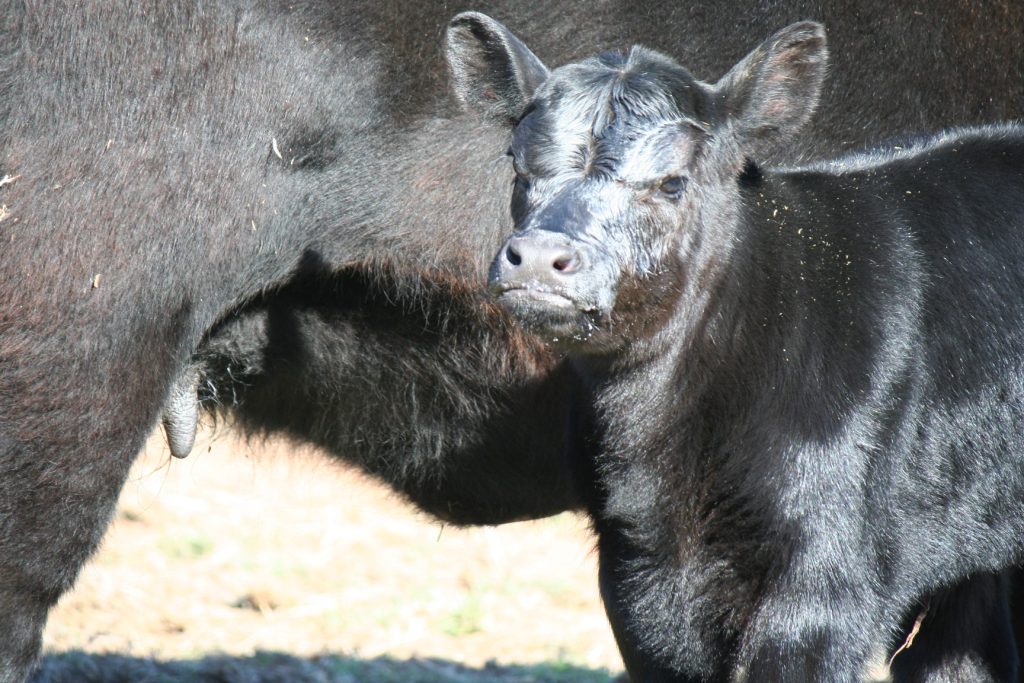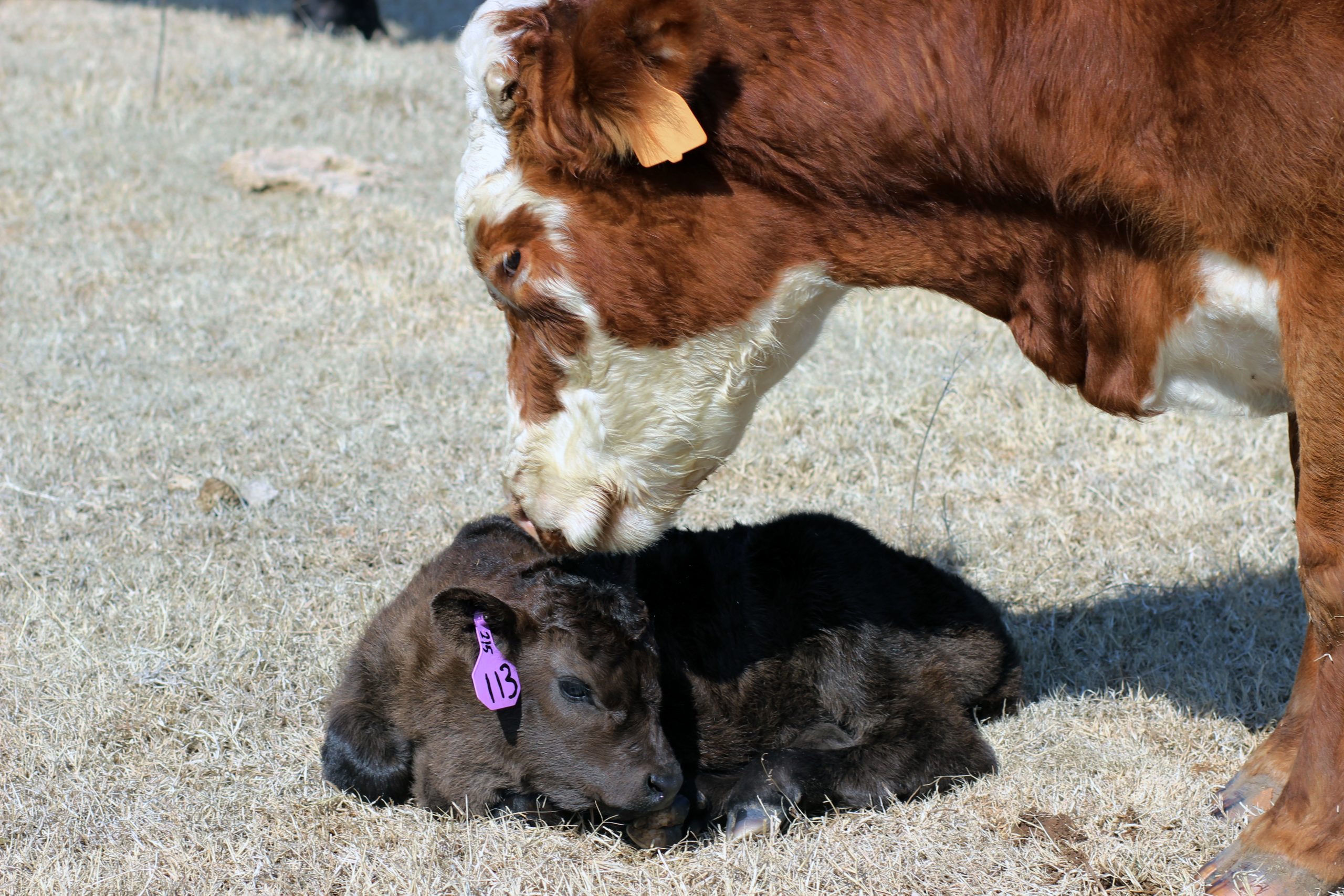The calving process is natural and a majority of time it happens without much fanfare—which is by design. However, there are situations where cows or heifers need help and intervention is necessary to save the calf and most importantly, the cow. Understanding the labor process and the warning signs of potential birthing problems is key to cow and calf mortality.
The first stage of labor is dilation of the cervix. Kacie McCarthy, cow-calf specialist at the University of Nebraska-Lincoln, described this period as a prep stage when the cow or heifer might start to look uncomfortable and will start having uterine contractions.
“These may be 15 minutes apart and then the cervix will start to dilate and you will eventually see that water sac be expelled and that’s the first stage,” she explained.
The second stage is delivery, McCarthy said this can take between 30 to 60 minutes. She said the 30-30-30 rule is often used in the calving process to determine if there is a potential problem. McCarthy said to be hands-off and give the cow proper time to have the calf naturally as there are many contractions happening during this stage.
At the completion of the delivery stage the calf should be in the birth canal with the head and feet coming first, also known as the anterior or diving position. Stage two should last up to 30 minutes for cows and up to 60 minutes for heifers. Anything beyond that is a signal that the female may need assistance.
Once the calf is delivered, the cow enters the third stage of labor, which is expelling of the placenta, also known as cleaning. This can take six to 12 hours after delivery. McCarthy noted that the placenta should detach naturally and should never be pulled by force. Hormones can be administered to cows that retain their placentas.
Time to get the chains?
The United States Department of Agriculture’s National Animal Health Monitoring System has conducted studies on assisted calvings. Of the heifers in their research, 82.8% required no assistance, 9.4% were considered easy to pull, 7.4% were hard to pull and 0.4% required a cesarean. Of the cows in the study, 97.8% required no assistance, 1.4% were considered easy to pull and 0.8% were hard to pull.

Most cattle producers have seen the calving process go off without a hitch time and time again, but in the unlikely event of a problem, recognizing the signs of danger in a timely manner is paramount. McCarthy said dystocia is the leading cause of neonatal death and it is most often seen in heifers. Dystocia usually refers to abnormal fetal positioning in the uterus or a cow or heifer with a narrow pelvis giving birth to a large calf.
“You want to be timely with your intervention to hopefully minimize or prevent calf loss,” McCarthy said. “If they’ve been laboring for a couple hours, and you aren’t seeing any progress you want to make sure you’re going out and checking if that calf is backwards, if it’s got shoulder dystocia or hip lock, because we want to prevent calf loss is possible.”
Other forms of dystocia include breech presentation, head or legs pulled backward, twins in the birth canal at the same time and fetal death. If intervention is needed, it is usually time to get the calf chains and possibly a ratchet calf puller. Only an experienced individual should use this equipment to pull a calf. Great bodily harm can be done to the calf and cow if they are not used properly. Contacting a veterinarian is the best practice in this case.
“Sometimes you may have to intervene and have a C-section done,” McCarthy explained. “It really just depends on if those heifers or cows have a narrow pelvis right that those calves can’t pass through.”
A calf experiencing complications can be assessed for signs of life by checking for a sucking reflex if a finger can be inserted into its mouth. McCarthy said if the tongue is visible, checking to see if the color is dull or bright pink can indicate if there is still life in the calf. In many cases of abnormal fetal positioning, calves will accumulate excessive mucus from the birth canal that will make it difficult for them to take their first breaths once delivered. McCarthy said to immediately clear the nasal passageways and get them breathing.
Selecting the correct bulls and heifers is the best strategy to reduce instances of dystocia and calving issues. Bull selection has an immense effect on a cow-calf herd because a bull breeds many cows a year and a cow will usually only produce one calf each year. For heifers, select bulls with a high calving ease expected progeny difference and a low birth weight EPD to make calving easier for females.
Prevention and preparation
McCarthy said producers should also consider conducting pelvic measurements before breeding heifers. That data could predict some complications they may have due to narrow pelvises. Aside from genetic prediction, McCarthy said adequate nutrition is critical for calving and breeding season.
“Moving into the calving season it helps with recovery, lactation and calving demands,” she explained. “As we are preparing for calving, we generally consider 90 days out as a great time to start thinking about getting condition back on those cows before calving. It’s really hard to put weight on cows when they’re lactating and have high nutritional requirements.”
Keeping cows in adequate body condition moving into the breeding season is also very advantageous. McCarthy recommends keeping cows at a body condition score of five and heifers at a score of six.
“Ultimately it really helps as we move those cows through and think about those reproductive challenges, uterine involution and being able to pull those body reserves for lactation,” she said.
The time of day when females are fed can also influence when they go into labor. McCarthy said producers can shift their feeding time to evening, or between 5 p.m. to 7 p.m., two to three weeks prior to calving and females will give birth more often during the daytime. This makes it easier to watch for calving difficulties and provide aid.
“There have been several studies that have shown this can shift calving time to between 6 a.m. to 6 p.m.” McCarthy explained.
Keeping females, especially heifers, in an area that is easy to monitor or using surveillance cameras to monitor for cows going into labor are other ways to keep a close watch on females during calving season.
McCarthy recommends cattle owners develop good relationship with their veterinarian in case of a calving emergency, prepare and clean calving facilities and stock up on calving supplies—such as colostrum, electrolytes, calf milk replacer and medications—prior to the start of the season.
Lacey Vilhauer can be reached at 620-227-1871 or [email protected].



